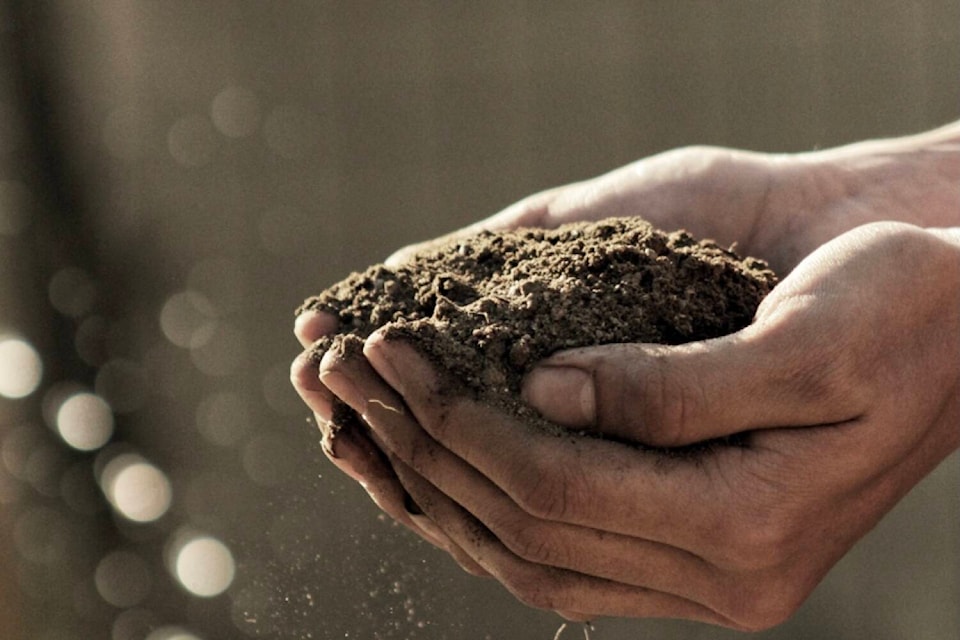For those of you who have not read my column before, my name is Corey and I am a hobby gardener.
My husband and I recently purchased a new home, on a small acreage, and we are turning a section of the acreage into a garden. I previously lived on a farm on land I rented, where we grew in a 60-foot by 60-foot fenced in area.
We recently installed game fencing around a section of our new home to keep the deer and elk from entering our garden. Now, the real work begins.
Much of the area we have chosen for our new garden is dirt - not soil. And there’s a big difference. In some areas it’s so compacted that when the wind blows it feels like we’re in the dust bowl. Other areas are much more healthy, but are still going to require some work.
We’ve decided to plant cover crops in an attempt to add some organic matter to the soil. One such cover crop is radish, more commonly known as tillage radish. We purchased ours from John Boy Farms out of Manitoba. As their website states, tillage radish is a natural biofumigant and helps to support soil health by growing succulent-type plants that grow rapidly. The succulents form a canopy, helping with erosion control and weed suppression, while the taproots grow into the ground, breaking up compacted sub soil.
Last weekend we set up our second greenhouse, which is 20 feet by 10 feet and we plan to grow tomatoes, peppers and perhaps a few cucumbers in there. We took some of our soil from another area to fill the greenhouse, and we have planted the radish cover crop inside. It germinates in about seven days and will usually have around a 30-day turnaround.
Before it goes to seed, we will mow the crop down and cover it with a silage tarp for a week or two to kill it. Then it can be lightly tilled back into the soil, adding nutrients. We may still need to add compost in order to grow our tomatoes and peppers in there, but we thought it was a good first experiment to see if it will work for the rest of our garden area.
Most cover crops are sown at the end of the growing season, providing soil protection over the winter months and often “blooming” in spring. The plant matter from the cover crop can then be put directly back into the soil, adding nutrients and organic matter. Some cover crops can self-sow if left to go to seed, so it’s important that you mow them down before that happens.
We have also been composting as much as we can — even recruiting our neighbours to contribute their kitchen scraps. Compost is a process however, and we will not be able to use our home-made compost for at least another year.
A new report from the Compost Council of Canada states that compost is an “unsung hero waiting in the wings to tackle climate change”.
The report calls on Canada to use soil to help combat the climate crisis. Essentially, healthy soil can sequester carbon. It also has so many other benefits. It all comes down to what is known as the Soil Food Web — something I think everyone should know about.
As the council states, “the interaction of the organisms in the soil food web are the source of soil functions. These functions are vitally important. A healthy, well-functioning soil generates fertility, manages water quality and availability, suppresses diseases and pests, fosters biodiversity, and sequesters carbon.”
The carbon sequestering is the main focus of the report, which explains that soil organisms have the ability to convert organic matter such as plant residues and animal waste into substances that stay in soil for long periods of time.
The Compost Council of Canada has five principals when it comes to soil health: keep living roots in the ground year-round (hello, cover crop), minimizing soil disturbances, optimizing inputs, promoting diversity, and ensuring soil remains covered.
This is a complex topic and one that I am just beginning to fully understand after a year of research. But now that I have a better understanding, I believe it should be the number one priority for any gardener.
For example, according to an article in Time magazine, a rough calculation of current rates of soil degradation suggests that we have about 60 years of topsoil left. Sixty years.
So, if this is something that interests you, here are a few resources.
The book, Teaming with Mibrobes: The Organic Gardener’s Guide to the Soil Food Web, by Jeff Lowenfels and Wayne Lewis. The documentary, Kiss The Ground, available on Netflix and the book ‘Dirt to Soil: One families journey into regenerative agriculture’ by Gabe Brown.
Another documentary that touches on the practice of regenerative agriculture is The Biggest Little Farm, on Netflix, but I will say that the people in this documentary had to have a lot of money to be able to do what they did.
Happy spring, and happy growing!
Corey Bullock is a reporter for several Black Press newspapers, including Arrow Lakes News.

